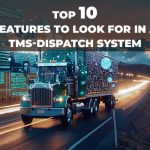
ELDs, or Electronic Logging Devices, are a type of device that syncs with a truck’s engine and records driving times. These devices are set to replace paper logbooks, which are now being phased out. In December 2016, the Federal Motor Carrier Safety Administration (FMCSA) published a final rule that established a three-phase implementation process for ELDs. The FMCSA provides detailed information regarding the ELD rule, including its requirements and the implementation process.
What is an ELD?
An ELD uses GPS technology to monitor driver activity. It is wired into the truck’s computer and engine. This technology is relatively easy to install and can be done by any mechanic. An ELD is required by law, and you should install one if you are driving long distances more than 150 miles. It may require a bit of programming, but the result is a much safer truck and a better life for everyone on the road.
In addition to keeping records of the time spent behind the wheel, ELDs also monitor the condition of your vehicles. They plug into your vehicle’s onboard diagnostics port and pull vital data from your vehicle. The data can be used to schedule maintenance or reactive repairs and even help you reduce the amount of paperwork you have to fill out. Drivers quickly log their service hours and duty status using an ELD, which can significantly simplify your job.
So what does an ELD do?
An ELD works by connecting to the onboard diagnostics port on your vehicle. It pulls data from the engine and uses a GPS tracker to determine its location. Better-quality devices also have built-in accelerometers and gyroscopes to detect motion and safety-related events.
An ELD records data automatically, but a driver can manually edit and annotate that data. In addition, ELDs keep track of any manual editing and annotation. The ELD is mandatory in all states, including Texas. The federal register has more information on electronic documents. A mobile device connected to the ELD can also provide the information needed for insurance purposes. However, it is important to note that an ELD cannot be used for a personal vehicle in any way.
Having an ELD installed on a commercial truck is an important step towards a safe and productive work environment. It is an important step toward improving public safety. The FMCSA is developing ELDs that can comply with the new rules. This will save the industry millions of dollars in administrative fees and increase driver satisfaction. And it will benefit the public as well. That’s a win-win situation for everyone!
How to use an Electronic Logbook?
Each driver is responsible for reporting their hours of duty electronically. This is how they do it in general:
- Select a vehicle and trailer from their driver account on the e-log.
- Choose or change their duty status, for example, driving, On Duty, or personal conveyance.
- Check for any pending HOS logs.
- If requested, electronically transfer RODS at the roadside.
Electronic logbooks have been mandated in the United States for the past year, and they will soon be required in Canada. The purpose of these e-logs is to relieve drivers of the burden of tracking HOS and replace it with an electronic system that improves accuracy and safety.
ELD Rule Implementation
The FMCSA, the U.S. Department of Transportation’s federal motor carrier safety agency, hosts webinars dedicated to the ELD rule implementation process. The sessions feature driver-focused presentations and panel discussions and include the agency’s ELD rule. The FMCSA has outlined drivers’ and carriers’ key points and responsibilities in the transition.
The ELD rule is mandated under Section 32301(b) of the Commercial Motor Vehicle Safety Enhancement Act, which was passed as part of MAP-21 (Pub. L. 112-141, 126 Stat. 405, 786-788, July 6, 2012). It asks the Secretary of Transportation to issue regarding regulating the use of electronic logging devices (ELDs) in interstate commerce for commercial motor vehicles (CMVs) driven by drivers who are required to keep duty status records (RODS).
The ELD rule is as follows:
- Commercial drivers who are required to report hours-of-service (HOS) records of duty status must utilize an ELD (RODS).
- ELD performance and design criteria are established, and ELDs are required to be certified and registered with the FMCSA.
- Establishes the kind of supporting papers that drivers and carriers must keep.
- Harassment of drivers based on ELD data or connected technology is prohibited (such as fleet management system). Drivers who believe they have been harassed have recourse under the rule.
ELDs and TMS.
The ELD unit does so much more than track the driver’s HOS logs. TMS Digital IFTA Manager can import data from the ELD, such as the miles driven in each state. That data is merged with data imported from the Carrier’s fuel card based on the date and truck number, thus creating a ‘trip.’ IFTA Manager then produces reports that calculate the taxes for each state-driven through to assist you with your quarterly IFTA reporting.
With formulas downloaded directly from the IFTACH website, reports, and alerts to draw your attention to invalid or missing data, you can feel secure that your quarterly numbers are correct.
Contact us today to ask for a free demo of our IFTA Management program. And, don’t forget to check out our other TMS Digital programs like Dispatch for over-the-road carriers, Tickets for short-haul or dump truck carriers, Equipment Maintenance to track repairs, Driver Safety to keep well-organized data on your drivers, and more! We look forward to showing you our great programs!
To know more about ELD, it’s functions and compliance Click here.



